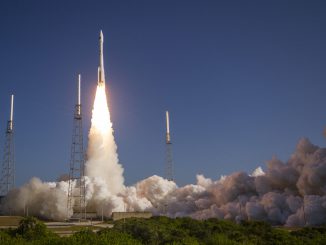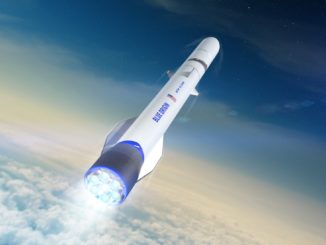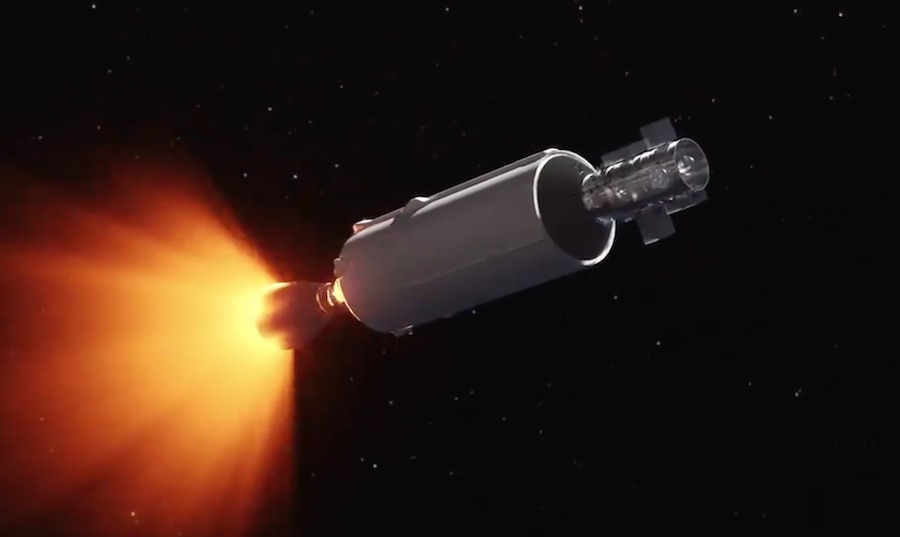
SpaceX and Arianespace recently announced plans to launch rideshare missions to sun-synchronous and geostationary orbit, dedicating big rocket capacity for small satellites as the U.S.-based launch broker Spaceflight committed to using a new Indian microsatellite launcher set to debut later this year.
The announcements earlier this month are emblematic of the growing smallsat manufacturing and launch business, a market forecast to nearly quadruple in size over the coming decade, from $12.6 billion between 2009 and 2018 to $42.8 billion from 2019 through 2028, according to the industry research firm Euroconsult.
SpaceX plans “regularly scheduled, dedicated Falcon 9 rideshare missions” to sun-synchronous orbit from Vandenberg Air Force Base in California, beginning late 2020 or early 2021, the company announced Aug. 5.
The base price to put your satellite on one of SpaceX’s rideshare missions? $2.25 million for up to 330 pounds (150 kilograms) of mass, or $4.5 million for a 660-pound (300-kilogram) payload.
That’s less than half the price charged by Rocket Lab, which offers dedicated rides for smallsats with a capacity of up to 330 pounds to sun-synchronous orbit. While SpaceX’s rideshare offering undercuts Rocket Lab’s price point, Rocket Lab’s seven successful orbital missions to date have deployed satellites going into other types of low-altitude orbits, not sun-synchronous orbit.
“Unlike traditional rideshare opportunities, these missions will not be dependent on a primary (payload),” SpaceX said. “These missions will be pre-scheduled and will not be held up by delays with co-passengers.”
Sun-synchronous orbit, in which satellites fly in a north-south direction around Earth, is a popular destination for Earth observation satellites because it offers regular revisits over imaging targets at the same time of day, allowing the collection of imagery under the same lighting conditions.
SpaceX launched a rideshare mission to sun-synchronous orbit in December 2018 with 64 small satellites on-board. But that mission, named SSO-A, was managed by Spaceflight, a Seattle-based company, which purchased the full capacity of a Falcon 9 rocket from SpaceX.
One of the core business functions at Spaceflight is arranging launch services for smallsats on rideshare missions across a range of launch vehicles.
SpaceX’s recently-announced rideshare missions will not use an intermediary broker. Instead, SpaceX says it will directly arrange rides with smallsat owners.
After last year’s rideshare, which set a record for the most satellites flown on a single U.S. launch vehicle, officials from Spaceflight highlighted the challenge of corralling so many customers to meet schedule deadlines. Like SpaceX’s planned multi-payload rides to sun-synchronous orbit, Spaceflight’s SSO-A was billed as a “dedicated rideshare” without a “primary” payload that had rights over schedule and orbit targets.
“For payloads who run into development or production challenges leading up to launch, SpaceX will allow them to apply 100% of monies paid towards the cost of rebooking on a subsequent mission,” SpaceX said.
Rebooking fees may apply.
Meanwhile, Spaceflight announced it has purchased the full capacity of the second flight of India’s new Small Satellite Launch Vehicle, which is set to debut later this year.
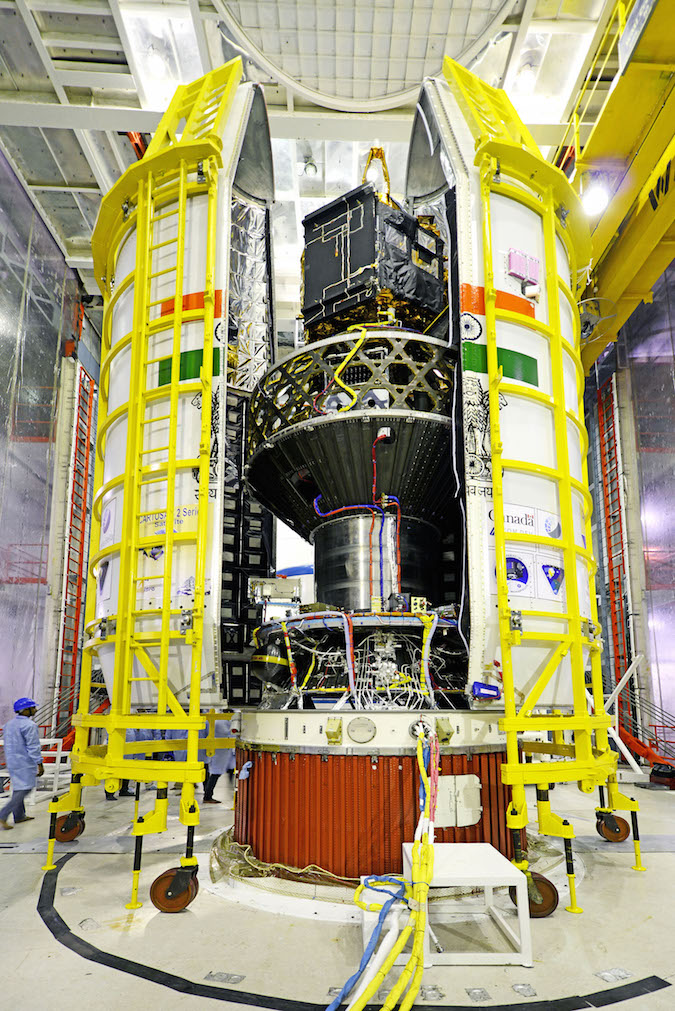
The SSLV will join India’s Polar Satellite Launch Vehicle and Geosynchronous Satellite Launch Vehicle families, providing relatively inexpensive transportation to low Earth orbit for small satellites. According to the Indian Space Research Organization, the SSLV’s lift capability to a 310-mile-high (500-kilometer) mid-inclination orbit will be around 1,100 pounds (500 kilograms).
Indian media reports peg the projected price of a dedicated SSLV launch at $4.2 million.
Powered by three solid-fueled stages and a liquid-fueled kick stage, the SSLV will stand around 111 feet (34 meters) tall and measure 6.6 feet (2 meters) in diameter.
In a statement Aug. 6, Spaceflight said it has purchased the entire capacity of the SSLV-D2 launch — the SSLV’s second demonstration flight — for an “undisclosed U.S.-based satellite constellation customer.”
“Spaceflight will aggregate the mission, delivering a single point of contact for the customer, handling all aspects of integration and mission management for the launch,” the company said.
The mission will take off from the Satish Dhawan Space Center, India’s spaceport on the country’s southeastern coast.
BlackSky, a Seattle-based subsidiary of Spaceflight, filed an application last month for a license from the Federal Communications Commission to launch four BlackSky Global Earth observation satellites on an SSLV mission in November.
Nick Merski, BlackSky’s vice president of space operations, said Monday in an interview that the company plans to launch four more satellites at the end of 2019. He would not confirm if the satellites would launch on India’s SSLV, adding that BlackSky would have more to say on the subject in a month or two.
“The SSLV is the much-needed solution to fill the gap in the portfolio of small launch vehicles,” said Curt Blake, CEO and president of Spaceflight, in a statement. “SSLV is designed for the launch-on-demand concept with very quick turn-around capability in between launches. SSLV is perfectly suited for launching multiple microsatellites at a time and supports multiple orbital drop-offs.”
The SSLV-D2 mission later this year will target a mid-inclination low Earth orbit, according to Spaceflight. The bulk of BlackSky’s Earth-observing satellite fleet operates in mid-inclination orbital planes, and Merski did confirm Monday that the next four will go to a mid-inclination orbit.
“We’re excited to add SSLV to our launch portfolio and manage many launches together — first to LEO (low Earth orbit) mid-inclinations this year and SSO missions starting in the fall of 2020,” Blake said.
Spaceflight inked the SSLV launch agreement with NewSpace India Ltd., a government-owned company affiliated with ISRO, the Indian space agency. The Indian government established NewSpace India Ltd., or NSIL, earlier this year to manufacture the SSLV and market an array of launch and satellite services to commercial industry, alongside Antrix Corp., and already-existing ISRO spinoff company.
“As our customers seek to populate their constellations, they want access to launch vehicles sized for their spacecraft and budgets, across a mix of rideshare and dedicated missions,” Blake said. “ISRO has been a trusted and reliable launch partner for years with the PSLV, and we’re very excited to work with NSIL to offer customers the option to launch from SSLV, hence our purchase of its first available launch.”
“We’re taking advantage of the growth in the small satellite market to deliver more launch options with the mini-launcher, and look forward to many more launches with Spaceflight,” said D. Radhakrishnan, director of NSIL.
Spaceflight says it has negotiated the launch of 270 satellites to date, and has plans for around 10 missions this year with nearly 100 payloads, including launches aboard SpaceX’s Falcon 9 vehicle, Northrop Grumman’s Antares rocket, Rocket Lab’s Electron, Arianespace’s Vega, the Russian Soyuz, Virgin Orbit’s LauncherOne, and India’s PSLV and SSLV rockets.
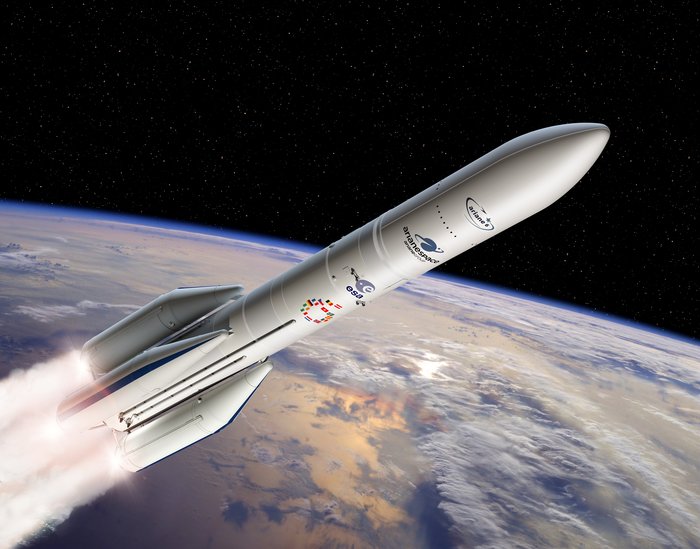
Arianespace also announced a rideshare flight for small satellites directly to geostationary orbit, a service not currently offered on the commercial market.
Arianespace’s “GO-1” mission, set for launch on the new Ariane 64 rocket in the first half of 2022, will haul up to 9,900 pounds (4,500 kilograms) directly into an equatorial geostationary orbit. The direct injection at geostationary altitude, more than 22,000 miles (nearly 36,000 kilometers) over the equator, will utilize the Ariane 6 upper stage’s new multi-burn capability over a flight lasting around six hours.
Most rockets carrying satellites toward geostationary orbit release their payloads in an elliptical transfer orbit. It’s then up to the spacecraft themselves to use on-board thrusters to circularize their orbits at geostationary altitude, where their velocities match the rate of Earth’s rotation.
The orbit gives satellites a constant view of the same part of Earth, making it a prime location for communications and data relay platforms. Due to their limited size, small satellites typically do not have room for enough propellant to climb into geostationary orbit from a transfer orbit.
The GO-1 is designed to help address that conundrum.
A multi-payload adapter system on top of the Ariane 64, the heaviest Ariane 6 configurations with four solid rocket boosters, will accommodate a range of smallsat sizes, ranging from microsatellites weighing several hundred pounds or more down to CubeSats.
The Ariane 6 rocket is scheduled for its first flight from the Guiana Space Center in South America next year.
“This is a new day for small satellites: until now, there has been no convenient, predictable, affordable path to GEO for small satellites. But with the Ariane 64 coming online and the GO-1 mission, we’ve engineered a solution that will pave the way for a smallsat revolution in geostationary orbit,” said Stéphane Israël, Arianespace’s CEO. “While most of such launches depend on a lead customer who could delay the flight, the GO-1 mission will follow a specific schedule — offering to each customer and to each satellite a ‘place of honor’ aboard this flight, which will lift off once the targeted payload capacity is booked.”
Arianespace said customers will be able to purchase slots on the GO-1 mission as few as six months before launch from the Guiana Space Center. The company suggested the GO-1 mission could be the first of a series of smallsat rideshare flights to geostationary orbit.
Email the author.
Follow Stephen Clark on Twitter: @StephenClark1.

